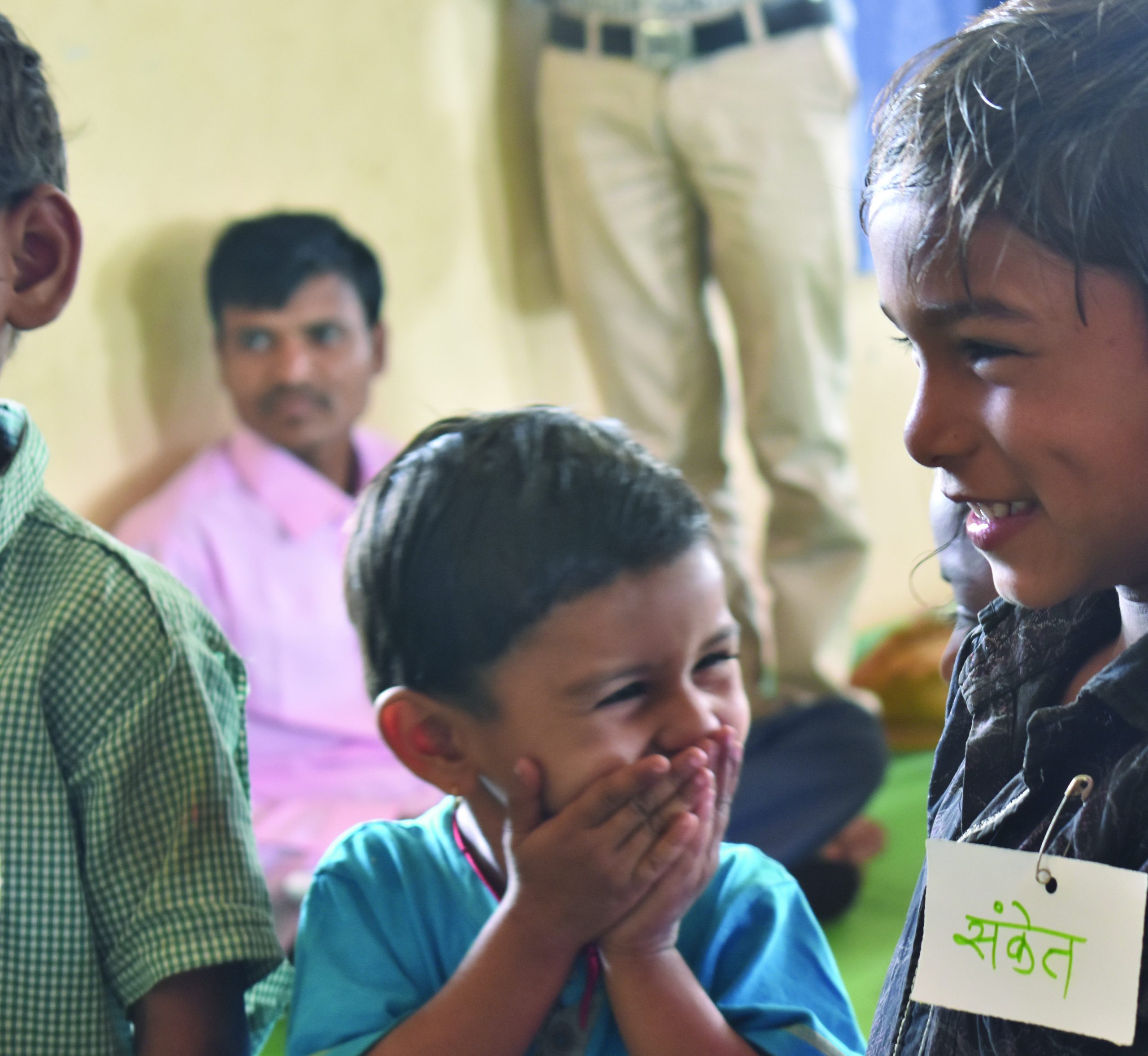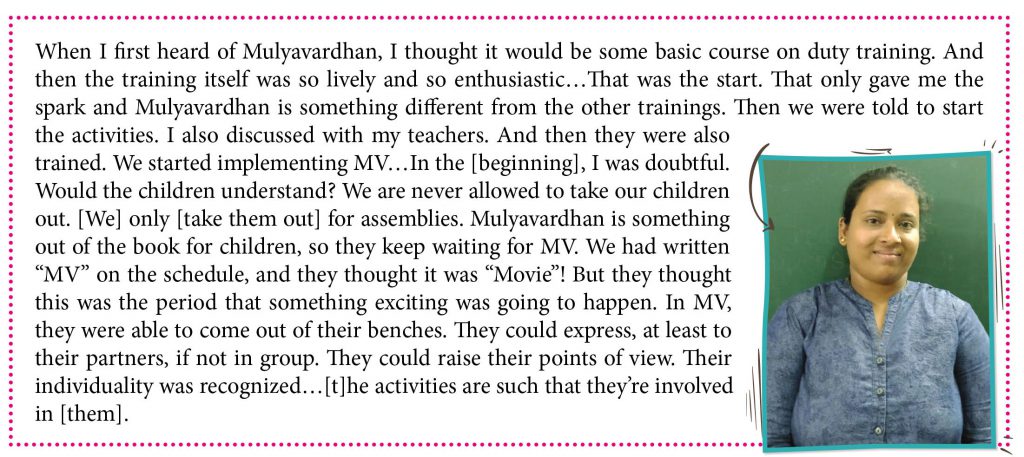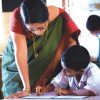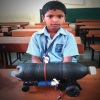MULYAVARDHAN AND TEJA’S TEACHING STYLE St. Francis Xavier High School, Siolim, Goa
“I lend my ears to them and that’s why my
students come to talk to me.”
Teja was a part of Mulyavardhan’s pilot program in the ABE and DSE schools in Goa, and she has nearly three years of experience in implementation. She believes that her teaching style has changed significantly from a teachercentric style to a student-centric one in these three years, as she was able to see the positive impact that the program’s strategies have had on the students as young as 1st standard. Teja has true dedication to her work, as she becomes emotional and ardent when she discusses her hopes for her students. She enthusiastically credits Mulyavardhan to have played a part in her journey as a teacher, primarily in her teaching methods and in her relationship with her students.
The Mulyavardhan curriculum is not only for the students to enjoy while they’re learning, but it’s also a way to ease the burden of teaching in the teachers; it is not only about joyful learning, but joyful teaching as well! The
traditional teaching style puts all the pressure on the teacher, who lectures through the day, while the child is expected to sit silently and listen. This often leads to teacher burnout, characterized by severe exhaustion and
stress, and teaching becomes boring and monotonous. Teja has found the program’s activities and pedagogy to be revitalizing.
Allowing children to express and enjoying the process of doing so has allowed Teja to better understand her students. This is one of the
ultimate aims of the program. Child-centric teaching strengthens the relationship between teacher and student; the child comes to school,
therefore, eager to spend time in the classroom. The impact of the program pedagogy on Teja’s teaching has made her feel that the students are learning better than before. The third stage of Mulyavardhan, after the classroom activities and the “Whole School Approach” with the stakeholders in school management, is the integration of the program into academic subjects. Teja has already begun to do so, by reflecting and experimenting on her methods to ensure that students gain the most
that they can in their time in the classroom. A child with special needs now prefers spending time in her class instead of alone in the resource room.
First, I didn’t have a connection with the [children]. I was a subject
teacher. Then I became a class teacher and soon I began MV. There I
got a chance to go into the depths of each child, good and bad, [and
understand] whatever the child is facing. Each child is different. This is
the change I saw in me, to go to each student and teach… [A]t interval,
you’ll never see me alone. I finish my tiffin either before or after the
recess because in recess, I am occupied with the children. Everyone
wants to come to talk! And the other teachers ask “Why are they coming
to you?” Children have so many issues in life that they cannot tell to
everybody. And not many people have time to listen. I lend my ears to
them and that’s why my students come to talk to me!
The impact of the program pedagogy on Teja’s teaching has made her feel that the students are learning better than before. The third stage of Mulyavardhan, after the classroom activities and the “Whole School Approach” with the stakeholders in school management, is the integration of the program into academic subjects. Teja has already begun to do so, by reflecting and experimenting on her methods to ensure that students gain the most that they can in their time in the classroom. A child with special needs now prefers spending time in her class instead of alone in the resource room.







